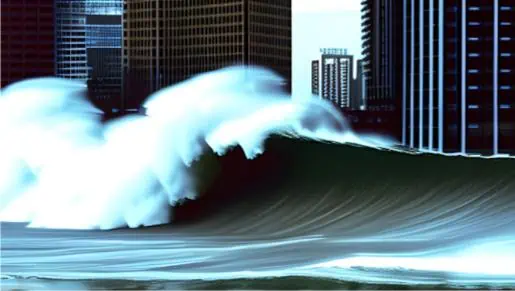Introduction
Over the weekend, South Africa’s coastal areas were met with a spectacular yet potentially dangerous natural phenomenon – spring tides. These powerful tides, combined with gale force winds, wreaked havoc in various regions, causing substantial damage to both public and private infrastructure. In this article, we will delve into what spring tides are, their causes, and the consequences they can bring to coastal communities.
The Science Behind Spring Tides
Spring tides are not a product of the season of spring, as the name might suggest. Instead, they are a natural occurrence that happens approximately every two weeks. These tides are characterized by exceptionally high high tides and very low low tides, creating a significant difference between high and low water levels.
The primary factor influencing spring tides is the alignment of the Earth, the Moon, and the Sun. During a new moon or a full moon, when the Earth, Moon, and Sun are in a straight line, their gravitational forces combine to create a stronger gravitational pull on the Earth’s oceans. This increased gravitational pull leads to higher high tides and lower low tides, which we refer to as spring tides.
The Recent Events
Over the weekend, several coastal areas in South Africa, including Gordon’s Bay, Stilbaai, Mossel Bay, and Three Anchor Bay in Cape Town, experienced the full force of spring tides. These extraordinary high tides were further exacerbated by gale force winds and rough seas, resulting in a spectacle that left social media flooded with videos and pictures of massive waves lifting stationary vehicles and causing damages to coastal infrastructure.
Impact on Coastal Communities
The consequences of spring tides, when coupled with adverse weather conditions, can be severe. As witnessed in the affected South African regions, the surges caused by spring tides can result in flooding, erosion of beaches, and damage to properties located in low-lying coastal areas. Infrastructure, both public and private, is at risk, and disaster management teams play a crucial role in assessing and responding to the damage caused by these events.
Sonica Lategan, the spokesperson for the City of Cape Town Disaster Risk Management Centre, emphasized the importance of caution during such periods. She noted that spring tides, combined with high seas and gale force winds, pose a significant risk to coastal communities.
Looking Ahead
As the new moon phase continues, spring tides are expected to persist for a few more days. High tide is projected to peak around 4:30 AM in the morning and 5:00 PM in the afternoon, gradually getting later each day. This means that coastal areas must remain vigilant and prepared for the potential consequences of these natural events.
The National Sea Rescue Institute (NSRI) has issued a warning to anglers, bathers, and boaters to exercise extreme caution in light of the ongoing spring tides. Safety should always be a top priority when enjoying the coastal environment, particularly during times of heightened tidal activity.
In conclusion, while spring tides can offer breathtaking natural spectacles, they also serve as a reminder of the power and unpredictability of our planet’s oceans. Coastal communities must remain vigilant and prepared, and individuals should heed warnings and exercise caution when engaging in coastal activities during these high-tide events. By doing so, we can ensure the safety of both people and property along our beautiful coastlines.
